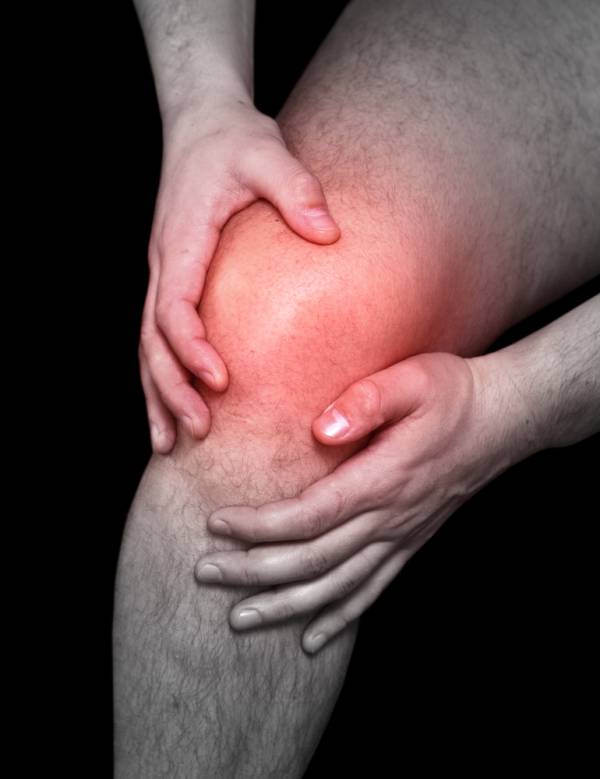Someone blows out an anterior cruciate ligament (ACL). We have all heard of it, and hopefully not experienced it. The ACL (see where it is located) is an important component of knee joint stability. Tearing an ACL means surgery, recovery, and rehabilitation. Although modern techniques have shortened the time it takes to get back to full functionality, it still takes months (and possibly a lost season) to arrive there.
What exactly do we know about the mechanism(s) of ACL injuries today? It is now thought a combination of factors cause the ACL to rupture. Let’s take a look.
A non-contact (no other person/external force involved) landing from a jump movement can cause an ACL injury. Evidence presented at the Orthopaedic Research Society 2012 Annual Meeting, however, demonstrated the injury mechanism that causes the ACL injury involved a combination of factors as opposed to a single factor, which many have claimed. It is a common belief that a rupture can occur in the ACL via a single plane motion – the tibia (lower leg bone) moving forward due to a significant quadriceps contraction.
According to Timothy E. Hewett, PhD, FACSM, Director of Research, Ohio State University Sports Health and Performance Institute and Cincinnati Children’s Sports Medicine Bio-dynamics Center, ACL injuries can be due to a tri-planar multi-dimensional combination of factors. “Sometimes in science we have a lot of clinical expertise and a lot of engineering expertise but we don’t have much—what I call–‘common sense-pertise’.”1
Hewett continued:
Is it just anterior (forward) translation that strains and tears the ACL? Is it just knee abduction (outward movement) or that inward motion that ruptures the ACL? Is it just internal rotation that tears the ACL? Our study demonstrates that each one of these factors can strain the ACL. But it is the combination of anterior translation, abduction and internal rotation that likely ruptures the ACL.2
Contrary to conventional wisdom, Dr. Hewett’s study demonstrated abduction strained the ACL more than anterior translation. In addition, internal rotation was similar to that of anterior translation.
The researchers also had a unique discovery regarding internal rotation torque. “We showed abduction increased the load on the ACL just as much as anterior translation did. Internal rotation increased load just as much as anterior translation did. But most importantly, when all three are combined, there was an additive effect in all three planes,” Dr. Hewett explained.
To investigate the issue further, Dr. Hewett and his colleagues conducted simulated jump landings on 19 subjects. There were 17 (89.5%) ACL failures using a custom designed drop-stand.
 The subjects were divided into two loading groups: without anterior shear and with anterior shear. They tested the effects of anterior tibial shear, abduction, and internal rotation under dynamic axial loading on ACL biomechanics. They found that single-axis abduction increased average ACL strain from 5.8 to 9.8 percent. In both groups, the addition of abduction or internal rotation increased ACL loading—with abduction loading the ACL more than internal rotation.
The subjects were divided into two loading groups: without anterior shear and with anterior shear. They tested the effects of anterior tibial shear, abduction, and internal rotation under dynamic axial loading on ACL biomechanics. They found that single-axis abduction increased average ACL strain from 5.8 to 9.8 percent. In both groups, the addition of abduction or internal rotation increased ACL loading—with abduction loading the ACL more than internal rotation.
Under axial impact, the combination of abduction, internal rotation, and anterior shear increased the average ACL strain significantly. This lead Dr. Hewett to declare, “Data from this study indicates that the most critical dynamic condition that leads to ACL failure is a combination of anterior shear, abduction and internal rotation under axial impact.”
Here is what can be derived from this study: during athletic competition (or any other activity) where a variety of movements/forces are placed on the knee joint, the structural integrity of the joint (the muscles, tendons, and ligaments securing it) can be compromised. In the past, it was believed that one single abnormal deviation was the root cause of an ACL rupture. However, it now looks like multiple deviations will cause a compromise, thus injury.
Can all ACL ruptures be avoided? Obviously there is no way to guarantee that. How can one then minimize their risk of tearing the ACL? Strengthen the knee joint musculature in the weight room and safely practice sports skills. Perform conditioning activities that progressively adapt the knee muscle, tendon, and ligament structures to forces that will be experienced during competition (e.g., position drills, agility drills).
While ACL injury is a frequent occurrence in sports, with these precautions and this new knowledge there is also new hope your knee will not be exposed to a combination of forces that exceed the structural integrity of the joint.






